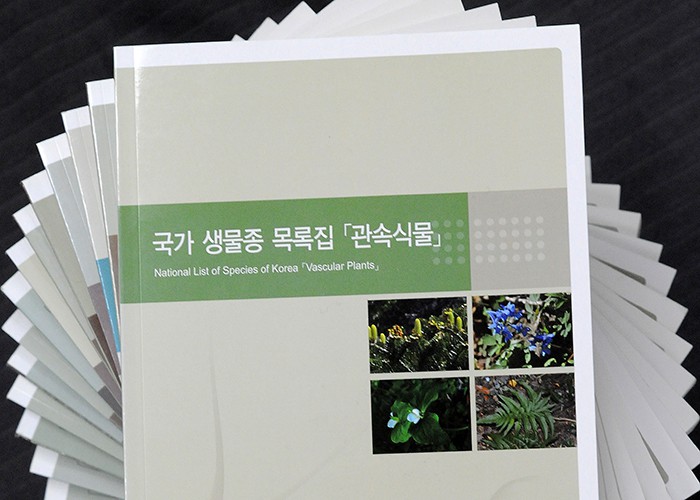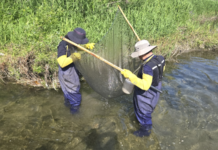
The National Species List, published in 33 volumes by the National Institute of Biological Resources, contains scientific information on 45,295 indigenous Korean species. The catalogue covers everything from the first documented ground beetle,Coptolabus smaragnidus monilifer (left), all the way to the most recently discovered fir moss, Huperzia jejuensis.
A list containing scientific information on 45,295 indigenous plant and animal species in Korea has been published in 33 volumes by the Korean National Institute of Biological Resources.
Entitled the National Species List, the catalogue informs the public about the 45,295 species that have been discovered in Korea through to 2015. The list contains the scientific names, species classification, date of discovery and other reference material.
The first Korean species that was announced to the global scientific community was the Jeju ground beetle,Coptolabus smaragnidus monilifer, discovered in 1847 on Jeju Island by a British army surgeon. When British scientist T. Tatum published this discovery in an academic paper, a Korean species came to be recognized by the global scientific community for the first time. Since then, numerous other species of plants and animals have joined the list, and in 1996 the Ministry of Environment was able to catalogue 28,462 species.

The National Institute of Biological Resources publishes a 33 volume National Species List that contains scientific information on 45,295 plants and animals that have been documented on the Korean Peninsula.
Following the United Nations Convention on Biological Diversity (UNCBD) signed in 1992, and the Nagoya Protocol signed in 2014, the National Institute of Biological Resources worked to create a comprehensive inventory of the nation’s indigenous species, and conducted research in the field to locate new organisms. Through such efforts, it was able to add the Jeju fir moss, Huperzia jejuensis, as the 45,295th species to the recently published volumes.
The National Species List was first published in 2011 covering plants and vertebrates in three volumes. More volumes were published in the intervening years and then last year, nine books were added, covering microorganisms and invertebrates, to bring the series up to a total of 33 volumes.
Sang-bae Kim, president of the National Institute of Biological Resources, said, “The National Species List is the first publication to catalogue the vast array of species found in Korea, with the aim of conserving species diversity. It is our hope that the information will underscore the importance of biological resources, and serve as a useful resource for establishing policies related to species diversity. The information will also play a big part in laying the groundwork for the biological resource industry.”
More information on the National Species List can be found at the link below.
http://www.cbd-chm.go.kr/eng/main/main.do
By Lee Hana
Korea.net Staff Writer
Photos: National Institute of Biological Resources
hlee10@korea.kr























